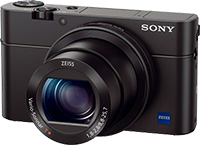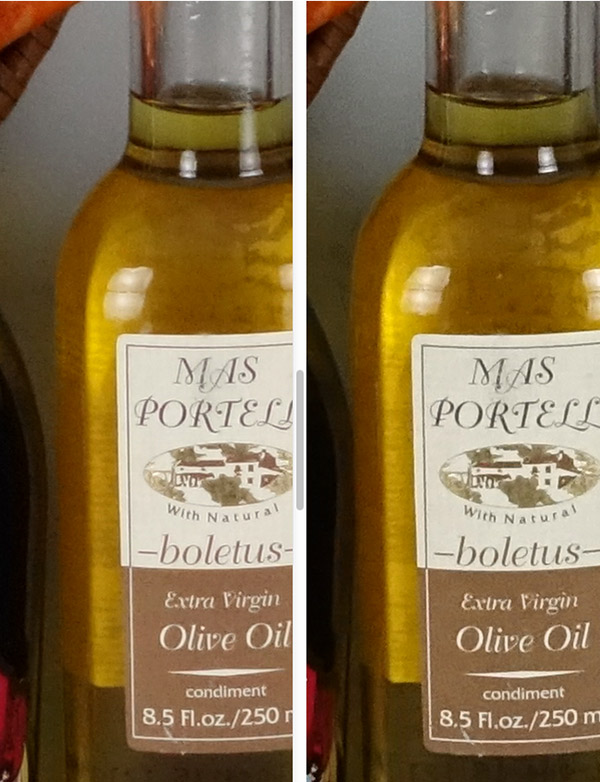Sony RX100 III First Shots posted: Let the premium compact comparisons begin!
posted Saturday, June 7, 2014 at 5:36 PM EDT

The Sony RX100 III finally landed in our test lab, and we're more than excited about testing it for you. We've just posted our first laboratory sample images, so while you're waiting for the results of our full investigation, feel free to begin your own analysis by visiting our RX100 III First Shots page, and also using these images in our Comparometer to compare against any other camera you're considering across the available ISO spectrum.
Representing one of the most respected lines of premium compact cameras of the digital era, this model joins the hugely popular RX100 and RX100 II models, each of which won top honors in our Best Pocket Camera category for our Camera of the Year awards in 2012 and 2013. This latest model seperates itself in several important ways from its siblings, one of the most interesting being incorporating the BIONZ X processor found in Sony's A7 and A7R full frame mirrorless cameras. (Its lens also gathers three times as much light at its tele end than do the previous models' lenses, and the RX100 III sports a popup EVF as well.)
So, is it better than the RX100 or the RX100 II? That's likely to be a common question, and our Comparometer is the best place to start. We couldn't help but take a first glance at the images as soon as they were posted, though, and it appears that Sony has taken a slightly different approach with their default JPEG processing, as you can see from the comparison examples below at the lowest available ISO for each camera, and at ISO 1600.

The crops above from our Comparometer show these two models at their lowest available ISO, as neither share a common ISO at the bottom end of their scales (the Mark II has 100 and 160, the Mark III has 80 and 125). They're close enough, though, that there shouldn't be any appreciable difference in image quality purely attributable to ISO. These are close to 100% (sized down just slightly to fit this page, check the Comparometer yourself for 100% sized versions) and there is a bit more detail in the thread patterns captured by the RX100 III on the right. It also does a good job of rendering our tricky red swatch, which has proven notoriously difficult for most cameras with sensors this size and smaller, even at lower ISOs.
Moving to ISO 1600 tells a somewhat different story, as the jpeg processing leaves more noise in flat areas, poorer definition in areas of lower contrast (check the left shoulder of the bottle, against the background), what seems to be stronger sharpening, and what looks like a different tone curve that makes some of the high-contrast detail pop out more.
On the sharpening, we have to say that they apparently have been able to increase sharpness quite a bit, yet without producing prominent halos around contrasting elements as we'd normally expect to see from this level of sharpening in-camera. (It looks more like what we're able to do in post-processing, using Photoshop and very small-radius, high-percentage unsharp masking.)
The pop on the detail is a little odd; we're wondering if it could have anything to do with the sharpening algorithm. The exposure of these two shots is only slightly different, with the RX100 II crop being at f/5.6 and 1/320s, and the RX100 III at f/5.6 and 1/400s. (The light level is only controlled to within ~1/3 stop, beyond that, it's tweaked to produce exactly the same exposure of the middle grey swatch on the min-MacBeth chart from each camera, in increments that are less than 1/3 stop different.)

Sony RX100 II ISO 1600 Sony RX100 III

Sony RX100 II ISO 1600 Sony RX100 III
The above ISO 1600 crops of our Mas Portell and mosaic tile images is also interesting, as the earlier RX100 II resolves perhaps a bit more fine detail in both the mosaic tiles and in the person's skirt, although the RX100 III appears to be pumping the contrast a bit more, as noted from the different colors assigned to the bottle lettering, especially on the Mas Portell bottle. Even though the RX100 II holds a bit more detail in areas of subtle contrast, it also shows slightly less noise in areas of flat tint in the background. On the other hand, the RX100 III's image has a lot more "pop," so might look better in reasonable-sized prints, vs pixel-peeping at 1:1 as above.
Stay tuned, as we'll take a much closer look for you in our detailed review, to determine if these effects are carried over to the less aggressive in-camera settings, as well as in RAW conversions.
[It's important to remember that these images are at default jpeg settings, and may or may not reflect the data in the RAW files; the RX100 III isn't yet supported by our standard RAW file converter.]
We'll have you much more information and in-depth analysis to come on the Sony RX100 III in the days and weeks ahead, so check back with us often!
[quick links: Sony RX100 III • First Shots • Comparometer]




